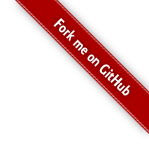push
Please make sure you have read the Tag Syntax document and understand how tag attribute syntax works.
Description
Push value on stack for simplified usage.
Attributes
Dynamic Attributes Allowed:false |
|||||
Name |
Required |
Default |
Evaluated |
Type |
Description |
|---|---|---|---|---|---|
| performClearTagStateForTagPoolingServers | false | false | false | Boolean | Whether to clear all tag state during doEndTag() processing (if applicable) |
| value | true | false | String | Value to push on stack | |
Examples
<s:push value="user">
<s:propery value="firstName" />
<s:propery value="lastName" />
</s:push>
Pushed user into the stack and hence property tag could access user’s properties (firstName, lastName, etc.) since
user is now at the top of the stack.
<s:push value="myObject"> ----- (1)
<s:bean name="jp.SomeBean" var="myBean"/> ----- (2)
<s:param name="myParam" value="top"/> ----- (3)
</s:bean>
</s:push>
when in (1), myObject is at the top of the stack
when in (2), jp.SomeBean is in the top of stack, also in stack’s context with key myBean
when in (3), top will get the jp.SomeBean instance
<s:push value="myObject"> ---(A)
<s:bean name="jp.SomeBean" var="myBean"/> ---(B)
<s:param name="myParam" value="top.mySomeOtherValue"/> ---(C)
</s:bean>
</s:push>
when in (A), myObject is at the top of the stack
when in (B), jp.SomeBean is at the top of the stack, also in context with key myBean
when in (C), top refers to jp.SomeBean instance. so top.mySomeOtherValue would invoke SomeBean’s mySomeOtherValue()
method
<s:push value="myObject"> ---- (i)
<s:bean name="jp.SomeBean" var="myBean"/> ---- (ii)
<s:param name="myParam" value="[1].top"/> -----(iii)
</s:bean>
</s:push>
when in (i), myObject is at the top of the stack
when in (ii), jp.SomeBean is at the top of the stack, followed by myObject
when in (iii), [1].top will returned top of the cut of stack starting from myObject, namely myObject itself
